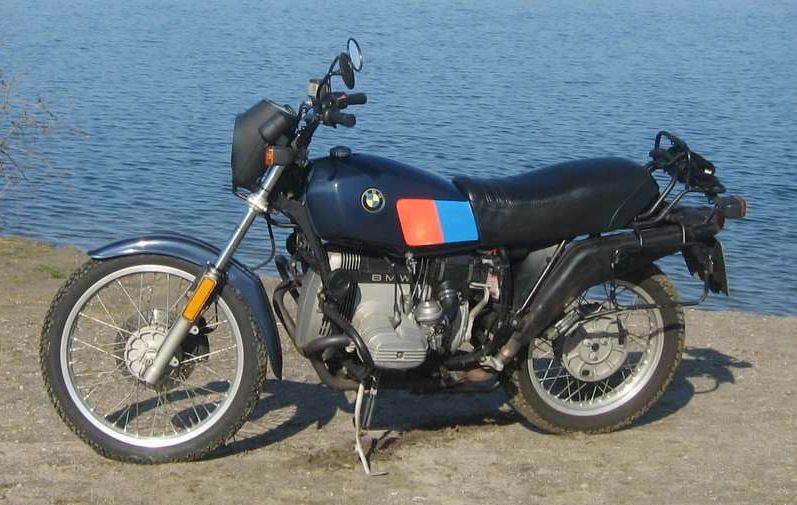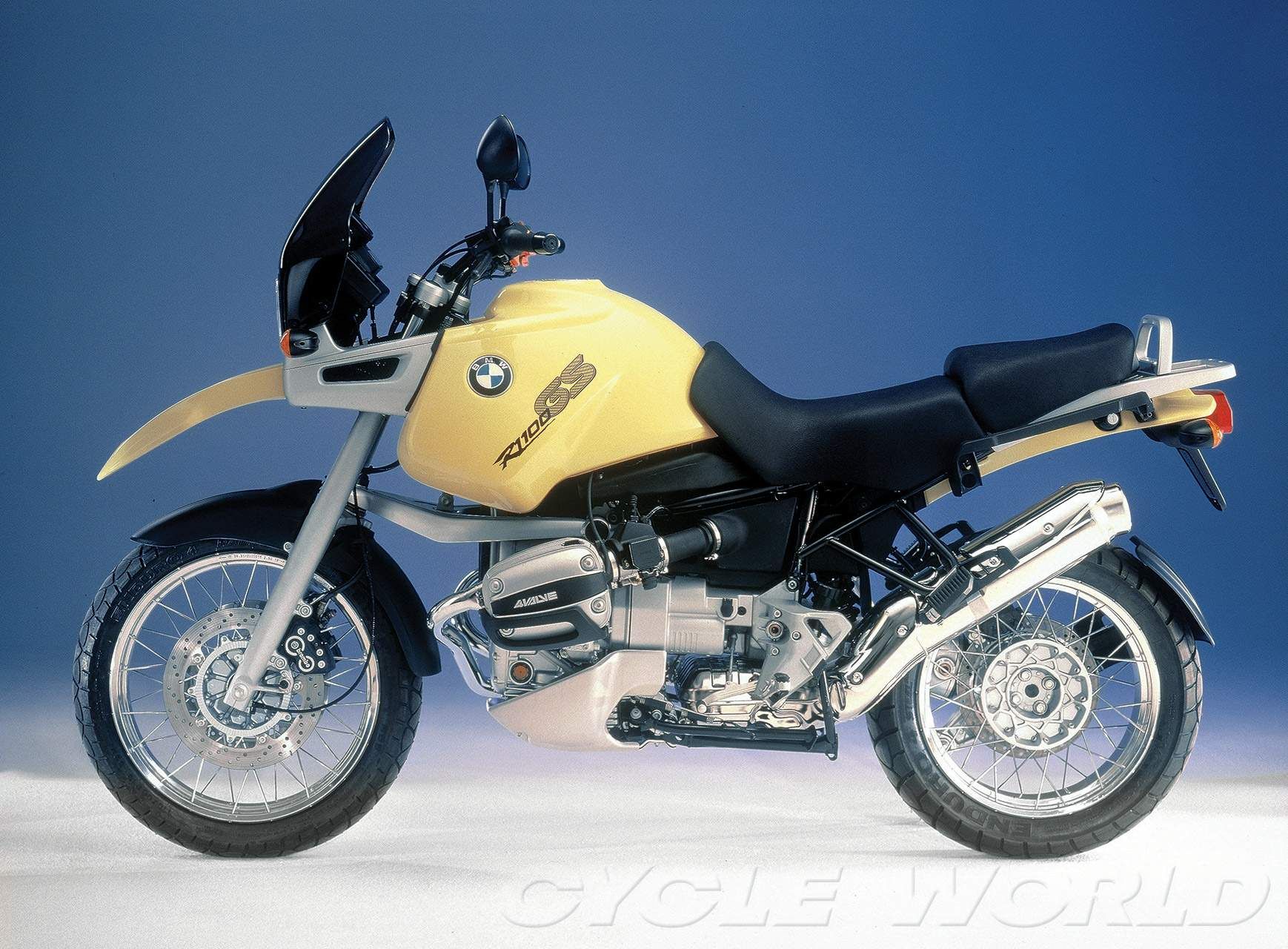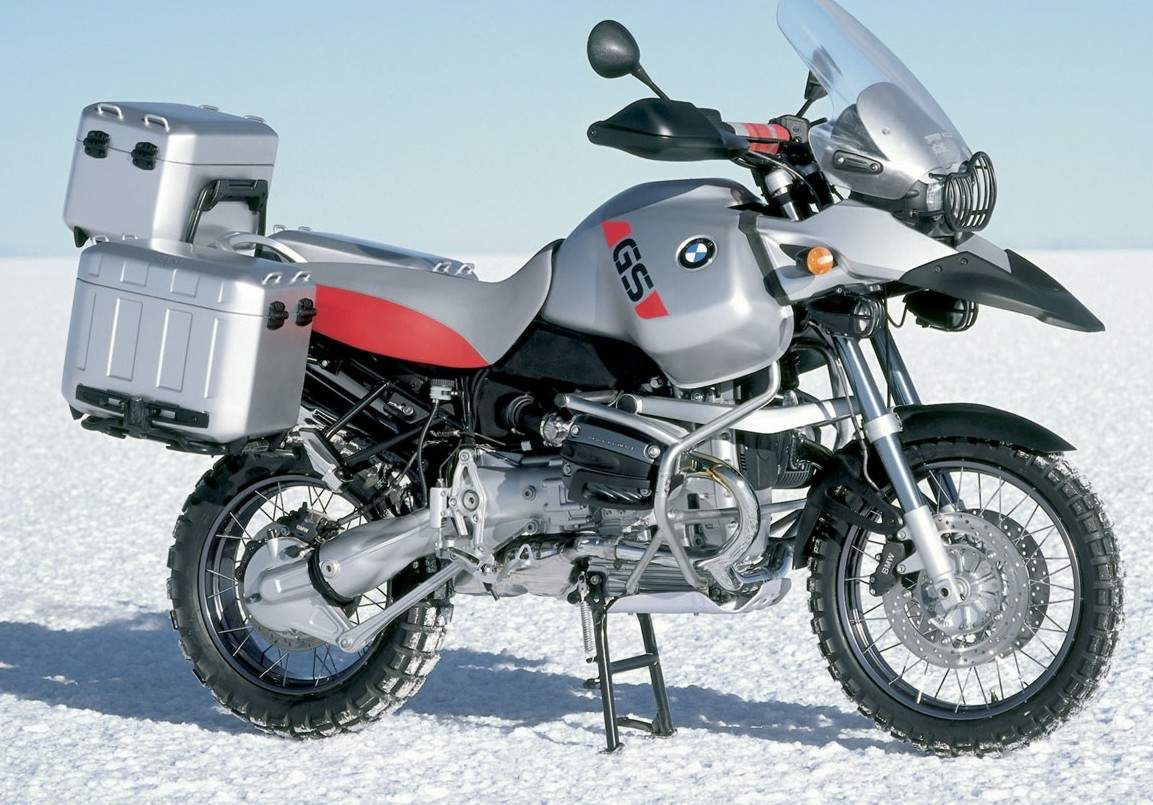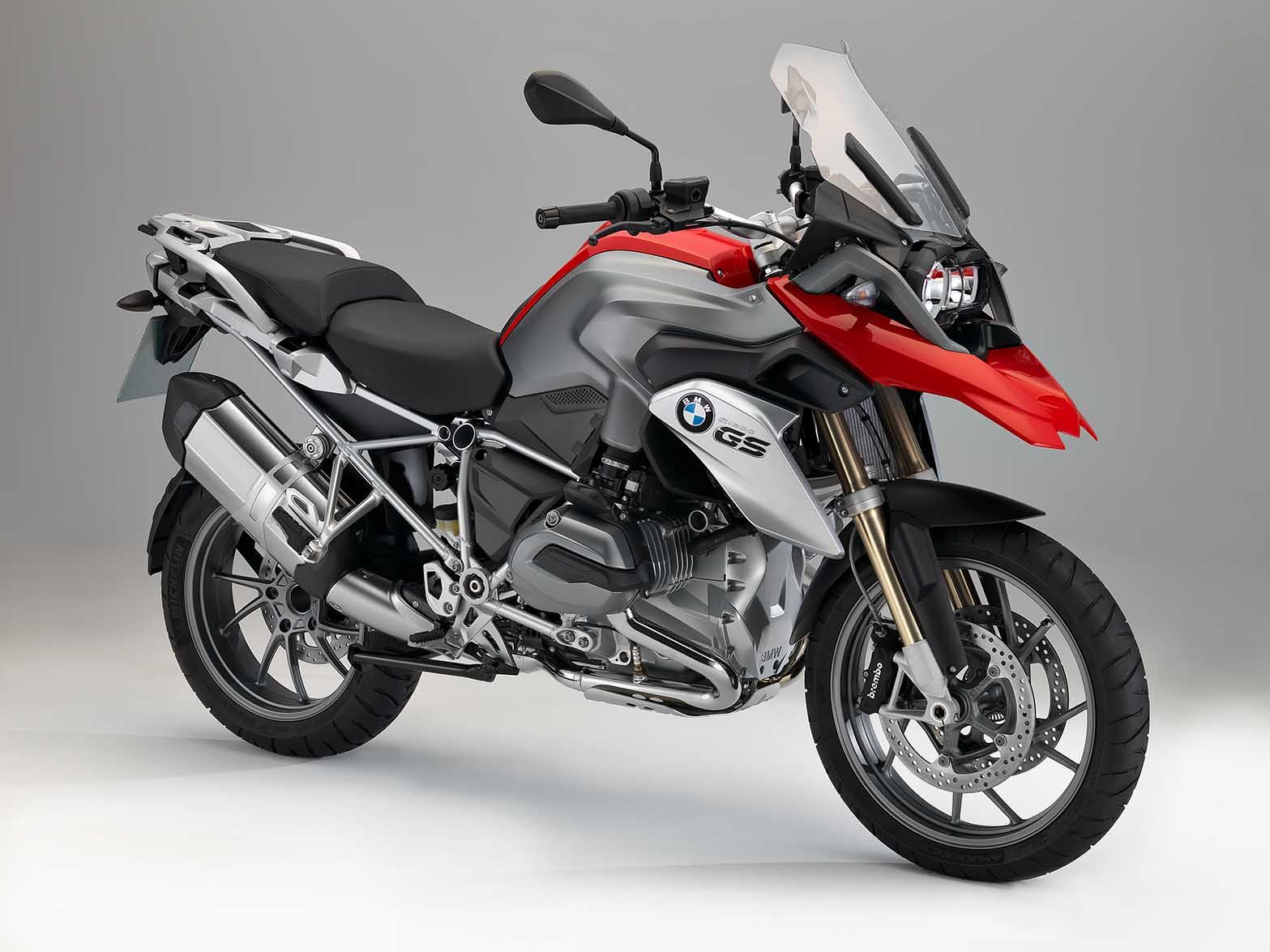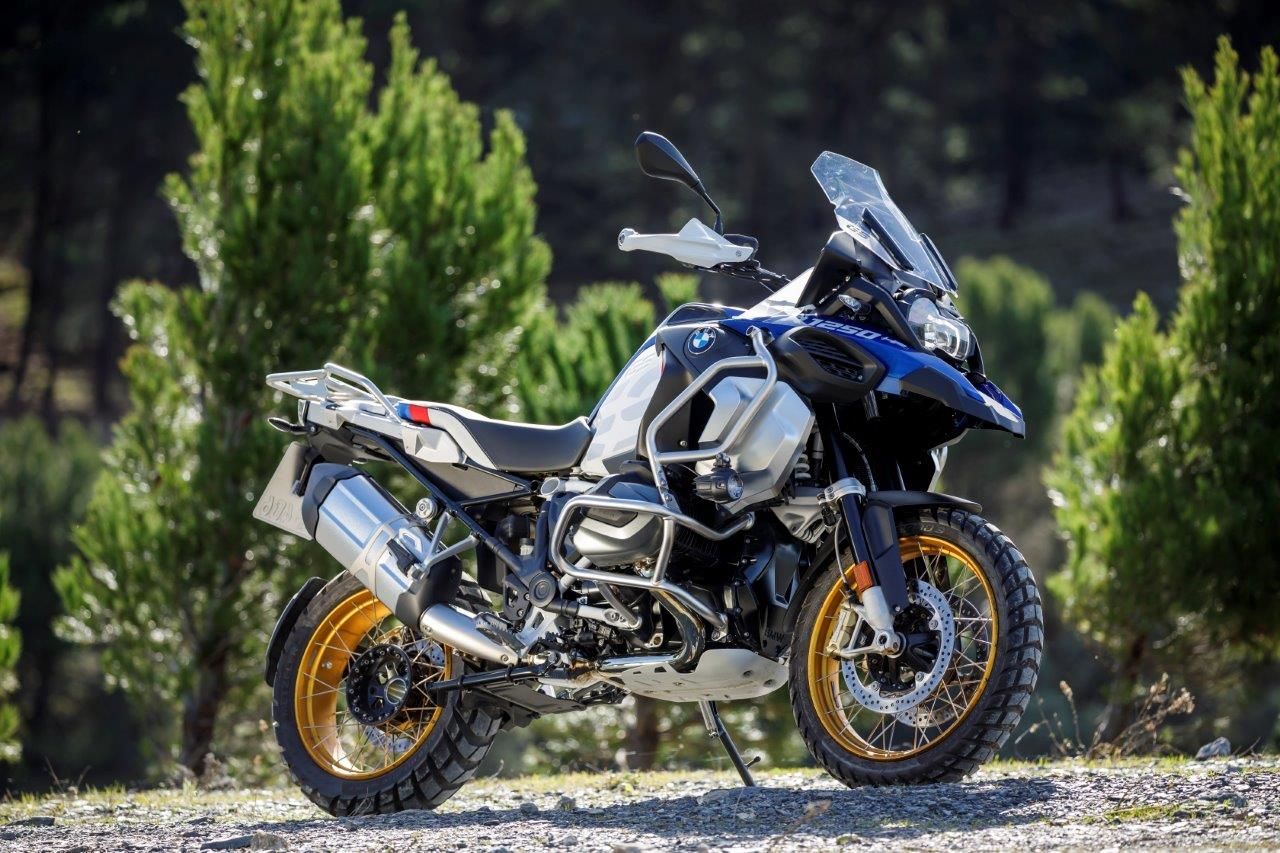Recent reports tell of a new BMW GS model being tested, featuring full liquid cooling and revised styling. A new name has also been registered, suggesting increased engine capacity. Don’t expect it before 2023.
Big Changes In Store for the Best-Selling Adventure Bike
BMW has been spied testing an uprated version of the already-impressive GS model. Details are scarce, as are images, but a recent application to trademark the name M1300GS suggests that the engine will have been slightly enlarged to be nearer 1300cc rather than the 1254cc it is currently, although it is not out of the question for it to remain at the lower capacity, albeit with power output tweaked upwards, the new name simply being there to differentiate from the old model.
Of course, BMW uses the ‘M’ prefix for its high-end sports models so is it possible that we could see such a model in the GS line-up or could it just be an up-specc’ed version?
Significantly Changed Engine
The test bikes have been spied before and observers have noted a changed front engine casing, suggesting changes to the big end of the motor. Those same reports claimed the engine had enlarged twin radiators, suggesting increased cooling capacity, which in turn suggests it will be fully liquid-cooled and not air-cooled with liquid cooling only to the cylinder heads.
Being fully liquid-cooled means the cylinders will be covered in a water jacket and not fins, which have two advantages; reduced emissions through better combustion conditions and increased sound insulation, both of which factors will be a part of the forthcoming Euro5B regulations.
Revised frame and Styling
Careful shrouding of the fairing, petrol tank and side sub-frame suggests not only new styling but also significant revisions to the frame, but quite what revisions, no-one can tell.
Naturally the styling will be altered but expect it to be evolution rather than revolution. As for when will it be made public, well, given that the 2021 model updates have only just been seen, it is likely that we will have to wait for the back end of 2022 for the 2023 model year at the earliest.
Development History of the BMW GS
BMW’s G/S (Gelände/Straße, German for ‘Off-Road/Road’) first appeared in 1980 as the R80G/S. The first models had fully air-cooled engines, shaft drive and Monolever rear suspension. Front suspension was by conventional forks. The most distinctive version was the R80 G/S Paris-Dakar, which featured a larger tank painted red, white and blue and was released to celebrate BMW’s victories in the famed Paris-Dakar rally.
By 1987, the name had changed slightly to GS, with the ’S’ meaning ‘Sport’. Rear suspension was changed to BMW’s patented Paralever system.
In 1995, a new engine was fitted, this featuring oil cooling to the cylinder heads. Capacity was 1100cc at first, rising to 1150cc and finally 1200cc. Front suspension was changed from conventional forks to the Telelever system, designed by British company Saxon Motodd, which features an A-arm to eliminate dive under braking.
In 2004, BMW scored a huge PR coup when Ewan McGregor and Charley Boorman used two 1150 GS bikes for their Long Way Round trip, where they rode East from London, all the way round the world to New York. This really put the GS on the map and it has been the best-selling adventure bike ever since. The pair then reunited with BMW for the Long Way Down trip, riding from John O’Groats at the northernmost tip of Scotland to Cape Agulhas in South Africa, the southernmost point of the African continent.
In 2013, the engine was further revised to incorporate liquid cooling to the cylinder heads. Adopting the tag LC, these engines were distinguished from earlier models by having the fuel/air mixture inlet on top of the cylinder and not behind, with the exhaust exiting from below the cylinder and not in front.
In 2015, the engine was enlarged again to 1254cc to produce the R1250GS. In 2009, the 500,000th GS rolled off the production line.
With the adoption of full liquid cooling, the venerable boxer engine is granted a stay of execution in the face of ever more stringent emission laws.


